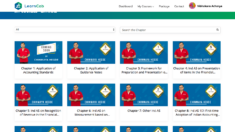How E-learning brands can transform their businesses with video
BrightcoveVideo is modernising the way e-learning businesses deliver their core product offerings. Driven by high speed broadband internet access, high mobile penetration rate, and the average consumers’ hunger for video content, educational organisations are capitalising on video to attract, engage and monetise their customer base. Here are the top five tips on how e-learning businesses can transform the way they deliver their product.
The student experience matters
User experience is critical for e-learning students, because if students are paying for online content they expect content to be served seamlessly, with a fast video playback and no buffering. Even in rural areas where the bandwidth tends to be low, an online video platform platform like Brightcove supports adaptive bitrate streaming to stream the best quality online video every time. Adaptive bitrate streaming creates multiple renditions for each video uploaded, automatically detects user bandwidth, and dynamically switches between renditions mid-stream to ensure smooth playback at the highest quality possible.
Once the basics of user experience are nailed down, it’s time to bring features into play. If you use a fully customizable HTML5 player, incorporate interactivity elements like content chapters, quizzes, polls, surveys and feedback forms to engage student during their learning experience.
Live streaming or on demand? Offer both
For busy students, organisations can choose to offer the option of live streaming the content as well as offering on demand options once the stream is over. Live assets can be clipped and turned into a series quickly, using a feature-rich live streaming platform like Brightcove Live.

Keep a lid on costs
By using Context Aware Encoding , Brightcove’s award winning video compression technology, organisations lower the cost of storing and streaming videos. CAE takes into account the broader context of the video experience by creating a custom encoding profile tailored to the combination of each individual video’s content complexity and predicted viewing environment. The result: higher quality video that starts up faster and buffers less – a critical factor for students who want get the most of out of their studying hours.
Secure and Protect Your Content
Content security and piracy are the topmost concern for e-learning businesses, given that the content is the actual premium product. Content security and piracy can be managed with two of the most widely used industry technologies, such as Encrypted HTTP Live Streaming (also known as encrypted HLS ) and Digital Rights Management (DRM ). With these two technologies built into the Brightcove video platform, educational organisations can easily secure their content with watermarks, token protection, restrict access by geography, domain, IP address or publication date, so that content is accessible only from within approved networks and meets specific security obligations for distribution.
Create engaging, immersive and interactive eLearning experiences
At a time where just delivering a video is no longer enough, how can savvy e-learning organisations stand apart and utilise video to surprise and delight prospective and existing students? Video at its core is about personal, human connections. Providing an experience that engages audiences matters, and motivates them to take that next step. Both Brightcove Gallery and In-Page can allow businesses to create customised live and on-demand video experiences—within minutes—to encourage deeper and more meaningful levels of engagement. Layouts like carousels, grids, and playlists, plus interactive elements both inside and outside the video player, encourage students to interact, mention, share, recommend or refer.
The new e-learning landscape
From live streaming to on demand, educational institutions are capitalising on the power of video technology to reach and engage with students. The once highly manual process of uploading slideware with no live commentary can now be replaced with lecturers uploading and publishing their lessons in video format in just a few clicks—then streamed across various devices and browsers. The advances in video streaming technologies can help educational institutions to go to market quickly, launch and scale as they grow their business, and streamline their processes.
